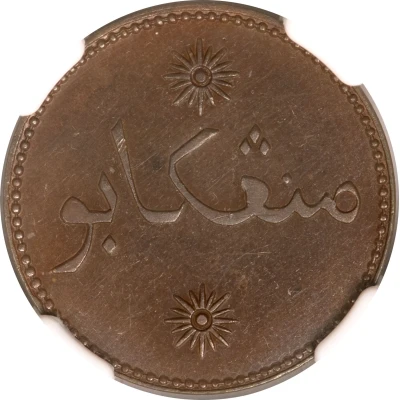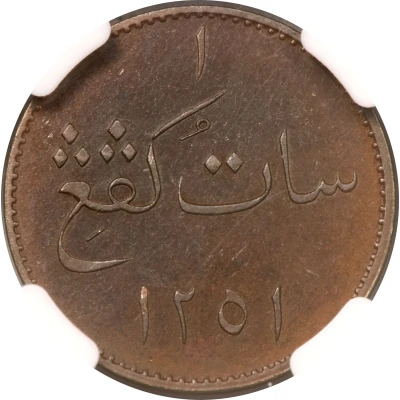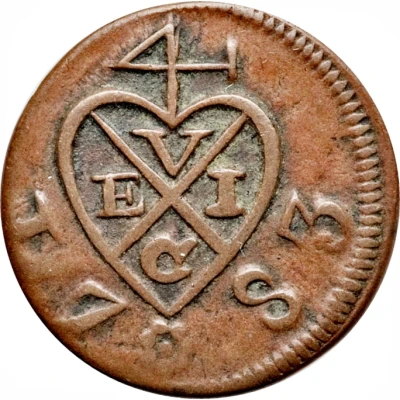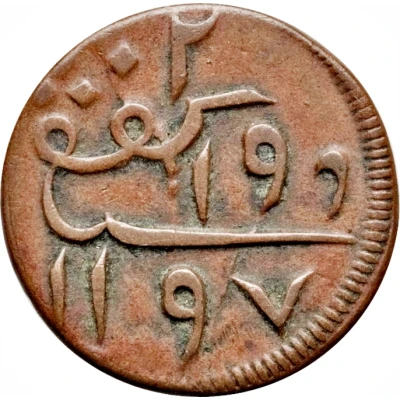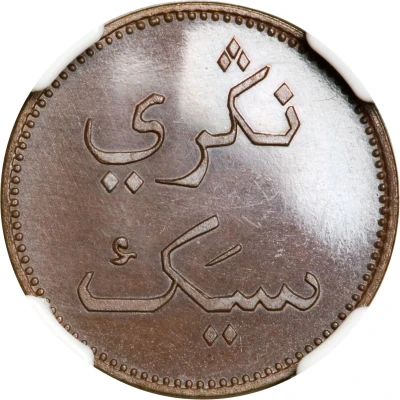
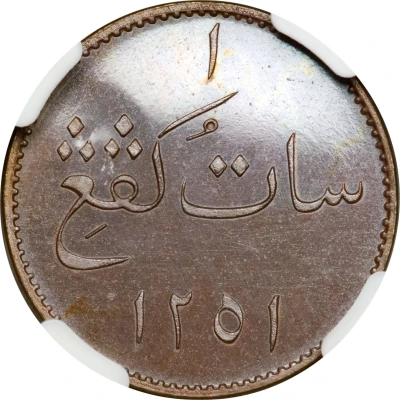

© Heritage Auctions
1 Keping Siak
1251 (1836) year| Copper | - | - |
| Issuer | Sumatra (British East Indies) |
|---|---|
| Type | Token |
| Year | 1251 (1836) |
| Calendar | Islamic (Hijri) |
| Value | 1 Keping (1⁄400) |
| Currency | Dollar (1783-1824) |
| Composition | Copper |
| Shape | Round |
| Technique | Milled |
| Demonetized | Yes |
| Updated | 2024-10-04 |
| Numista | N#24413 |
|---|---|
| Rarity index | 88% |
Reverse
Arabic inscription with denomination at top and date at bottom using eastern Arabic numeral. Beads around border
Script: Arabic
Lettering:
١
سات كڤڠ
١٢٥١
Unabridged legend:
1
Satu keping
1251
Translation:
One keping
AH 1251
Comment
These coins were not official currency of any state. They were first issued in the early 1800s by British merchants at Singapore, to alleviate base coin shortage, before spreading to various parts of the Malay Archipelago. To circumvent confiscation attempts by colonial authorities (particularly the Dutch), British merchants use inscriptions that refer to locations that are vague, fictitious, or unaffiliated to Europeans. In this manner, legally it could not be argued that the tokens were intended for circulation in colonial territories.See Singh (1986:445-449) for details.
Interesting fact
The A Token 1 Keping (Siak) 1251 (1836) from Sumatra (British East Indies) made of Copper is a rare and valuable coin that is highly sought after by collectors. One interesting fact about this coin is that it was minted during a time of great change and upheaval in the region. The British East India Company had established a presence in Sumatra in the early 19th century, and the coin was minted during a period of intense competition between the British and the Dutch, who also had colonies in the region. Despite the challenges of the time, the coin remains a testament to the rich cultural and economic history of Sumatra and the British East Indies.
